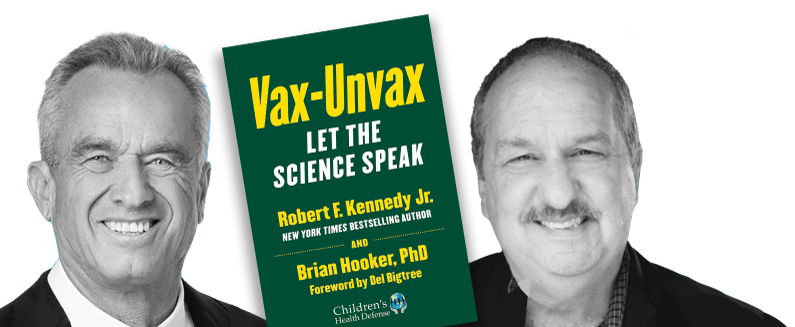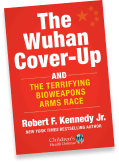FCC Knew Phones Exceeded Radiation Limits, Hid Info From Public and Courts
FCC testing showed popular cellphone brands exceeded the agency’s safety limits for human exposure to wireless radiation, but the agency hid the information from the public and the courts, according to data obtained by the Environmental Health Trust.
Miss a day, miss a lot. Subscribe to The Defender's Top News of the Day. It's free.
The Federal Communications Commission (FCC) knew for years that certain popular smartphones exceeded the agency’s safety limits for human exposure to wireless radiation when held close to the body, according to data obtained by the Environmental Health Trust (EHT) via Freedom of Information Act (FOIA) requests.
Rather than going public with the testing results, the FCC hid them — even when important lawsuits concerning cellphone radiation’s impact on people’s health were underway.
The outcome of such lawsuits might have been different, had the agency been honest about what it knew, said W. Scott McCollough, lead litigator for Children’s Health Defense’s (CHD) Electromagnetic Radiation (EMR) & Wireless cases. McCollough called the FCC’s actions “scandalous.”
Miriam Eckenfels-Garcia, director of CHD’s EMR program, told The Defender:
“While we are not surprised that the FCC is hiding information and prioritizing the protection of big industry over people’s health, seeing the FCC’s actions play out in this way reminds us why the work we are doing in this program is hugely important and why CHD is proud to be on the forefront of holding the FCC and telecom industry accountable through our litigation, education and advocacy.”
Eckenfels-Garcia and McCollough commended the nonprofit scientific research and education group EHT for getting the information out to the public.
“EHT deserves great credit for digging this out,” McCollough told The Defender, “and exposing the FCC’s extraordinary efforts to protect the industry it is supposed to regulate, rather than protecting the people whose health it should be safeguarding, by concealing information people need to know.”
Five phones surpassed FCC radiation limit
According to EHT, the FCC undertook the 2 millimeter (mm) testing on Aug. 30 through Sept. 23, 2019, after an Aug. 21, 2019, Chicago Tribune investigation reported that some cellphones exceeded the FCC’s wireless radiation limits when tested 2 mm from the body.
The FCC typically uses a separation distance of roughly 10mm, or potentially more, for premarketing cellphone testing.
The Chicago Tribune chose 2mm to mimic the real-world experience of those who carry their cellphone in a tight pants pocket or against their skin, EHT said.
The FCC didn’t release its 2 mm testing results until Sept. 29, 2023, in response to EHT’s FOIA requests seeking documents related to cellphone radiation tests performed by the FCC from January 2017 through April 2020.
The FCC’s testing results showed that five of 11 cellphone models it tested exceeded the FCC’s safety limit of 1.6 watts per kilogram (W/kg) when tested at a distance of 2 mm from the body:
- Apple’s iPhone XS, measured at 2.34 W/kg and 1.99 W/kg.
- Samsung’s Galaxy S9, measured at 4.52 W/kg and 4.38 W/kg.
- Samsung’s Galaxy J3, measured at 5.20 W/kg and 5.14 W/kg.
- Motorola’s Moto g6 Play, measured at 1.98 W/kg and 1.98 W/kg.
- BLU’s Vivo 5 Mini, measured at 2.2 W/kg and 2.75 W/kg.
McCollough said he suspected the FCC hid its results because releasing them would have supported the Chicago Tribune’s investigation results.
“The FCC was intent on hiding this information because they knew how bad it would reflect on the commission and the industry it serves.”
“The FCC has abandoned its primary mission, and is now just a servant to telecom industry masters, conspiring against the public’s interest,” McCollough added.
According to McCollough, the Chicago Tribune’s investigation led to some lawsuits — “most famously Cohen v. Apple.”
The plaintiffs in that lawsuit alleged that Apple failed to warn iPhone users that they would receive excessive radiation if they placed the phone close to their body.
McCollough said the case’s dismissal in 2020 relied on the fact that the FCC claimed to have tested Apple phones and found them compliant with FCC exposure regulations.
“The separation distance was addressed there too, but one has to believe that if the court there had known about the other results — now exposed by EHT — it may have made a different decision in that case,” he said.
Additionally, McCollough said, “Had we known this when CHD and EHT were challenging the FCC’s exposure limits before the D.C. Circuit” — referring to CHD and EHT’s historic win in 2021 that challenged the FCC’s safety limits — “it would have turned out even worse for the FCC.”
The U.S. Court of Appeals for the District of Columbia Circuit ruled that the FCC failed to consider the non-cancer evidence regarding adverse health effects of wireless technology when it decided that its 1996 radiofrequency (RF) emission guidelines protect the public’s health.
The court sent the case back to the FCC and said the agency had to “provide a reasoned explanation for its determination that its guidelines adequately protect against harmful effects of exposure to radiofrequency radiation.”
The FCC has still not complied with the court’s mandate.
If the court had known about the 2 mm testing results, “that court might have done more than just send the case back without any deadline for compliance with the mandate,” McCollough said.
Joe Sandri, a lawyer for EHT, pointed to another set of lawsuits — still ongoing — that might be affected by the testing results.
The roughly 80 plaintiffs in the consolidated set of cases, Motorola Inc. v. Murray, allege injuries and fatalities — mostly but not exclusively through brain cancer — may have been caused by the wireless radiation emitted by their cellphones.
“The industry has been working hard to keep out evidence, and this has impeded those lawsuits’ progress,” Sandri told The Defender.
‘Phones should be tested the way they are used’
When the FCC finally released the results to EHT, the agency noted it was doing so “with the caveat that the 2 mm separation distance test results are inconsistent with FCC practice … and are misleading because they reflect extreme conditions.”
Theodora Scarato — EHT’s vice president for policy and education who filed the FOIA requests — pointed out that using a 2 mm separation distance isn’t “misleading” or “extreme.”
“It is outrageous that the U.S. allows phones to be tested with whatever separation distance the companies want. Phones should be tested the way they are used,” she said in a press release.
“Children and adults use and carry phones pressed to their body for hours every day. … It is time for a new approach to cell phone testing, one that reflects the way people use phones today,” Scarato said.
Scarato also recommended the U.S. adopt “a strong oversight and compliance program, including post-market RF emission and health effect surveillance.”
FCC still withholding documents
When the FCC sent EHT its 2019 testing results, the commission refused to share seven related documents — including intra-agency communications containing “pre-decisional internal deliberations” — claiming that doing so would “chill deliberations within the Commission and impede the candid exchange of ideas.”
EHT, via Scarato, on Dec. 28, 2023, appealed the FCC’s decision to deny public access to the seven documents, noting that the public health implications for withholding the information are far-reaching.
Sandri said EHT waited until now to go public with releasing the FCC’s testing results obtained last September because it wanted to give the FCC — which has a new administration — a “civil amount of time” to comply with the 2021 court remand and the FOIA appeal.
“Now that this delay has gone on, it’s time to go public,” he said.
In EHT’s appeal letter, Scarato pointed out that scientific research has found adverse effects from cellphone radiation exposure at levels well below FCC limits. The adverse effects include cancer, the induction of oxidative stress, epigenetic effects, damage to neurotransmitters, memory, brain development and the immune, endocrine, hematological and reproductive systems.
The public interest in releasing the documents outweighs the public interest in withholding them, Scarato said.
“If there is a balance to be weighed between protecting deliberative privilege and the notification of the public of harmful interference the balance should be on the side of transparency and public health.”
The FCC has not yet responded to the appeal.
The FCC did not immediately respond to The Defender’s request for comment about its 2019 testing results and the seven related documents it is withholding from public view.
Sign up for free news and updates from Children’s Health Defense. CHD focuses on legal strategies to defend the health of our children and obtain justice for those injured. We can't do it without your support.








No comments:
Post a Comment